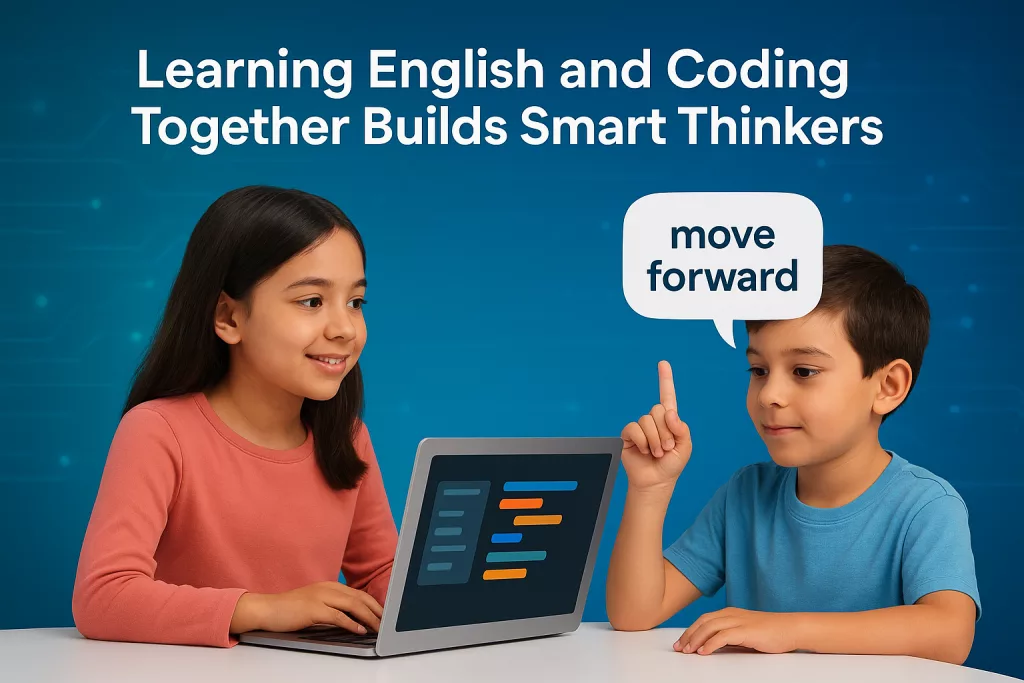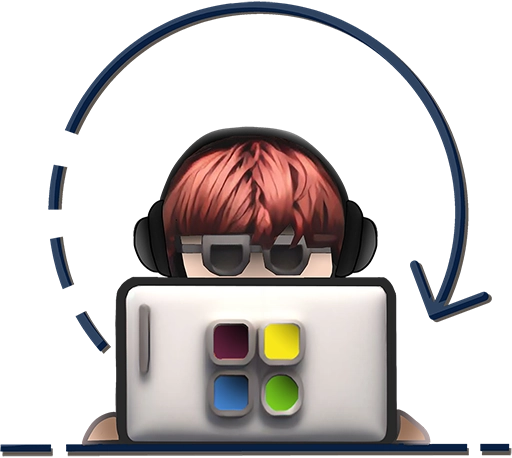In today’s fast changing world, children need more than traditional lessons. They need future ready skills. Studies show that over 80% of global technology platforms operate in English¹, while the demand for coding skills continues to grow rapidly. By 2027, the global coding education market is expected to reach USD 16 billion².
Learning English and coding together gives children a unique advantage by helping them think globally, create confidently, and communicate clearly.
Learning English and Coding Together Builds Smart Thinkers

Children connect words with action as they learn English and coding side by side, building logic, creativity, and confidence.
When children learn both subjects together, they develop more than academic knowledge. They become logical thinkers and problem solvers.
Coding teaches children how to plan, sequence, and solve challenges step by step. English gives meaning to every command such as “move forward,” “repeat,” or “click,” making code come alive through language.
For example, when a child programs a robot to move forward and sees the action happen, English becomes a language of creativity and understanding rather than simple vocabulary practice.
Research shows that children who engage in coding activities improve problem solving skills by 30%³ compared to those who do not. This hands on approach strengthens critical thinking and communication while making learning enjoyable.
Interactive English Learning Through Coding Projects
Learning becomes an adventure when English and coding are taught together.
Children read, speak, and write English while designing games, animations, or creative missions. Each project turns lessons into interactive stories that are both engaging and practical.
Instead of memorizing, children use the language naturally as they describe their ideas, explain how their projects work, and collaborate with peers. This method builds confidence, creativity, and curiosity.
A 2019 study by the Education Endowment Foundation found that project based learning in STEM can improve student performance by up to 20%⁴, especially in problem solving and communication.
Many parents observe that their children speak more confidently, concentrate better, and feel excited about creating something on their own. Learning English and coding together feels like play but builds essential life skills.
Preparing Children for a Global Digital Future
English is the language of communication, and coding is the language of innovation. Together, they prepare children to succeed in a global digital society.
Most software, AI tools, and programming platforms operate in English. When children understand both, they can collaborate internationally, create original ideas, and lead in the digital future.
A 2021 UNESCO report highlights that coding literacy and English proficiency are strongly linked to better digital participation and career opportunities⁵ in the 21st century.
A child who can code in English is not only learning but also joining a global community of thinkers and creators.
The Takeaway
Combining English and coding gives children the creative advantage to think, build, and communicate effectively.
When learning is guided by curiosity, creativity, and collaboration, children become confident digital learners who can express ideas and shape the world around them.
The future belongs to those who can express their ideas and turn them into reality.
Sources
¹ Statista — Share of global technology platforms operating in English
² GlobeNewswire — Global Coding Education Market Report 2027
³ Frontiers in Education — Impact of Coding Activities on Problem Solving Skills in Children
⁴ Education Endowment Foundation (EEF Report 2019) — Project Based Learning and Student Performance in STEM
⁵ UNESCO (2021) — Digital Literacy, English Proficiency and Global Participation

